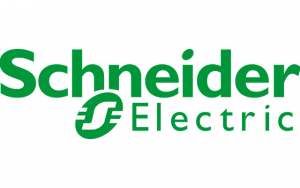This article is part of a three-part series looking at the importance of Smart Pumping and the value of new technologies behind it.
Authors: Hussain Ahmed, Schneider Electric, and Jack Creamer, Schneider Electric
Current methods for managing and allocating global water supplies are becoming obsolete. Symptoms of outdated water management infrastructure include inconsistent water supply, poor water sanitation, and substandard drainage. These problems, unfortunately, will continue to increase as more users come online. According to the United Nations, the urban population of the world is forecast to grow from 3.4 to 6.3 billion people in 2050 (footnote #1).
Water / wastewater utilities and service providers working with local and national governments will bear the responsibility of addressing this challenge and will need to cost effectively modernize their infrastructures in order to cope with the surging demand. This is especially true in the new megacities that are popping up across the globe. This rapid urbanization is occurring because of the attraction of higher paying jobs and because rural dwellers hope that cities can provide them with improved living conditions and enhanced services.
Fortunately, billions of dollars in water / wastewater research and development investment is helping to fuel the availability of new technologies. These technological advancements improve the efficiency of key processes such as water extraction, purification, and transportation. The water management process is tightly linked to energy, as energy is the lifeblood that runs the operational equipment of the entire water delivery ecosystem.
The treatment of wastewater alone, for example, requires significant amounts of energy. Table 1 illustrates how much more energy is required to pump and process groundwater (e.g. from aquifers) as opposed to fresh water present at the surface (footnote #2) As more demand is placed on the “easy to get to” water resources, the need to process groundwater, brackish water, and seawater will continue to increase. Table 1: Amount of energy required to extract and treat water from various sources
Table 1: Amount of energy required to extract and treat water from various sources
In water / wastewater operations, energy is utilized for the purposes of extraction (surface water, groundwater), transformation (treatment to drinking water standards, desalination), water resource delivery (municipal, industrial and agricultural supply), reconditioning (wastewater treatment) and release. For example, it is estimated that 7% to 8% of the energy that is produced globally is used to lift groundwater and pump it through pipes, and to treat both groundwater and wastewater. This figure rises to around 40% in developed countries (footnote #3). The demand for energy to enable wastewater treatment is expected to rise globally by 44% between 2006 and 2030 (footnote #4).
The Electric Power Research Institute (EPRI) estimates that 2-4% of total US electricity consumption is used for water provision at water and wastewater treatment plants (footnote #5). Including end-uses, the national US energy consumption for water is approximately 10%. Energy requirements for surface water pumping are generally 30% lower than for groundwater pumping (footnote #6). It can be expected that groundwater will become increasingly energy intensive as water tables fall. Therefore strategies for controlling energy consumption are a must in order to cut costs.
The new water / wastewater infrastructure solutions are designed to enable rapid commissioning, safe and efficient operation, and simplified maintenance. This paper analyzes critical components within the water resource delivery chain such as pumps, variable speed drives (VSD) and sensor and software-driven monitoring. Recommendations are provided for how to integrate and deploy these new, digitized “smart” components.
Pumping cuts across many if not all applications in this sector and we will look into pumps and energy consumption in Part 2 of this series of articles.
Footnotes
- Managing Water under Uncertainty and Risk, The United Nations World Water Development Report 4, VOLUME 1, 2012, page 19
- CEC 2005, EPRI 2002, Stillwell et. al. 2010b, 2011, Stillwell 2010c
- WEF (World Economic Forum). 2009. Energy Vision Update 2009: Thirsty Energy: Water and Energy in the 21st Century. Geneva/Englewood, Colo., WEF/Cambridge Energy Research Associates. http://www.weforum.org/reports/thirsty-energy-water-and-energy-21st-century?fo=1 (Accessed 30 April 2011.)
- IEA (International Energy Agency). 2006. World Energy Outlook 2006. Paris, IEA. 2007. World Energy Outlook 2007. Paris, IEA.
- EPRI (Electric Power Research Institute). 2002. Water and Sustainability (Volume 4): U.S. Electricity http://www.circleofblue.org/waternews/wp-content/uploads/2010/08/EPRI-Volume-4.pdf (Accessed 2 May 2011.)
- Consumption for Water Supply and Treatment – The Next Half Century. Palo Alto, Calif., EPRI.
READ PART 2: Why Pumping Infrastructure Matters
READ PART 3 – Smart Pumping: Energy & More!
About the Authors
Hussain Ahmed is Program Manager in Schneider within the Industry Division’s OEM Segment team. Since 1994 he has focused on automation and commissioning projects, as well as global software and architecture development. Mr. Ahmed holds Bachelor’s degree in Electronic Engineering. He joined Schneider Electric in 2006 and has executed several roles including marketing, business development, and software development /commissioning.
Jack Creamer is Schneider Electric Segment Marketing Manager – Pumping Equipment, based in the United States. Mr. Creamer has more that 30 years in the Electrical Industry, and has been involved for 10 years in the Pumping Industry. He is involved in key industry organizations such as the Hydraulic Institute and Submersible Wastewater Pump Association, where he holds both Committee Chair and Board level positions. In his time in the Pump industry, he has help Schneider create numerous solutions that both enhance pumping efficiency and address issues such as maintenance and downtime.




Comments